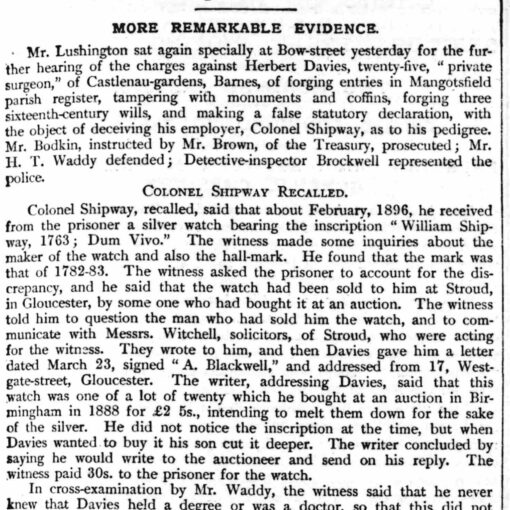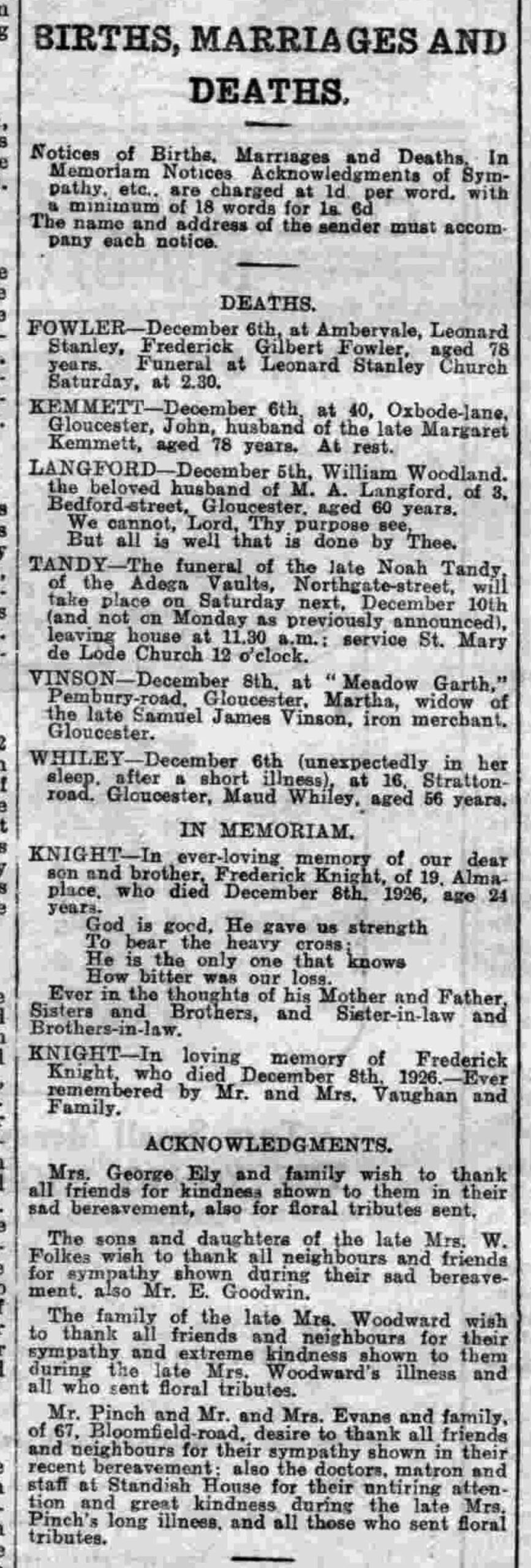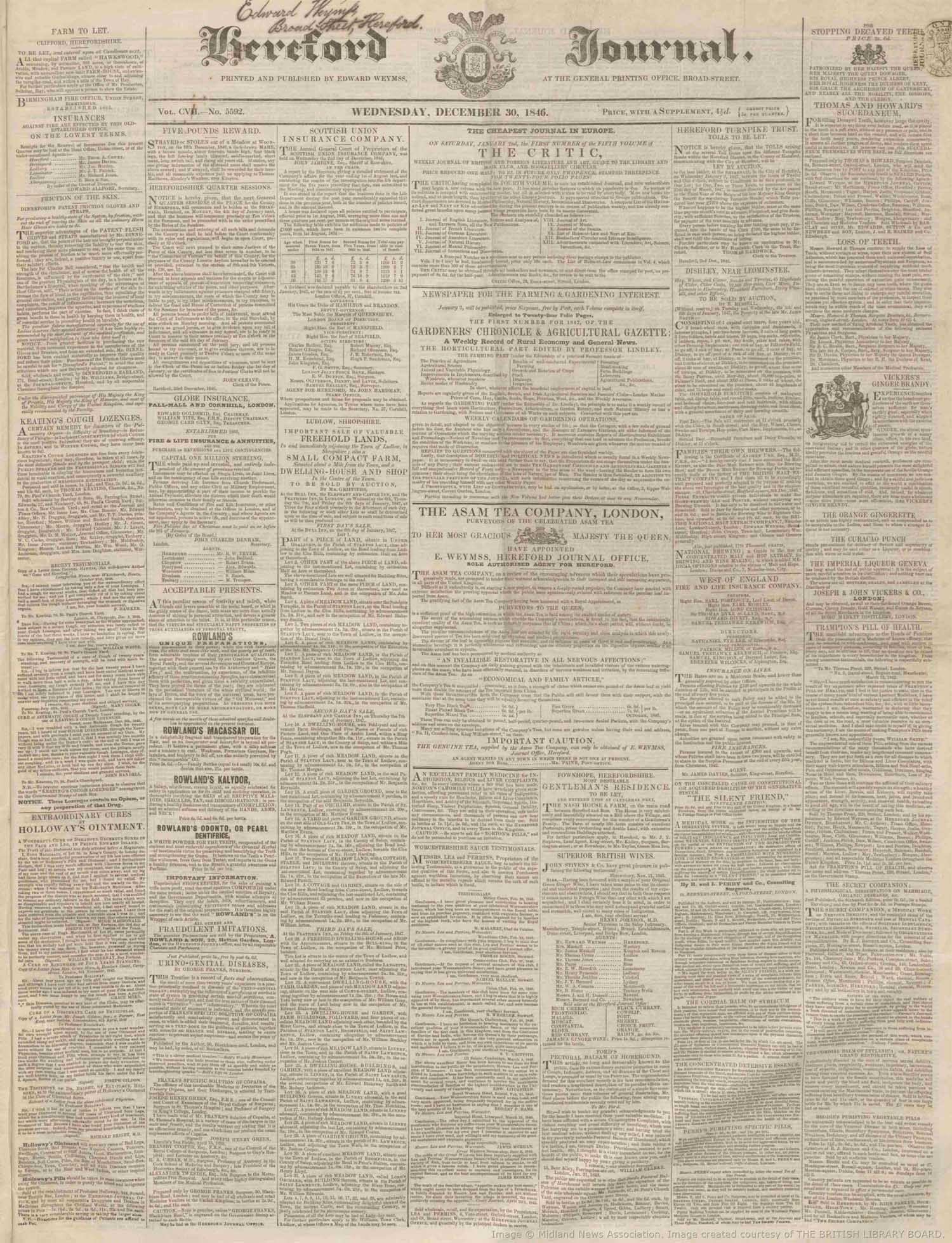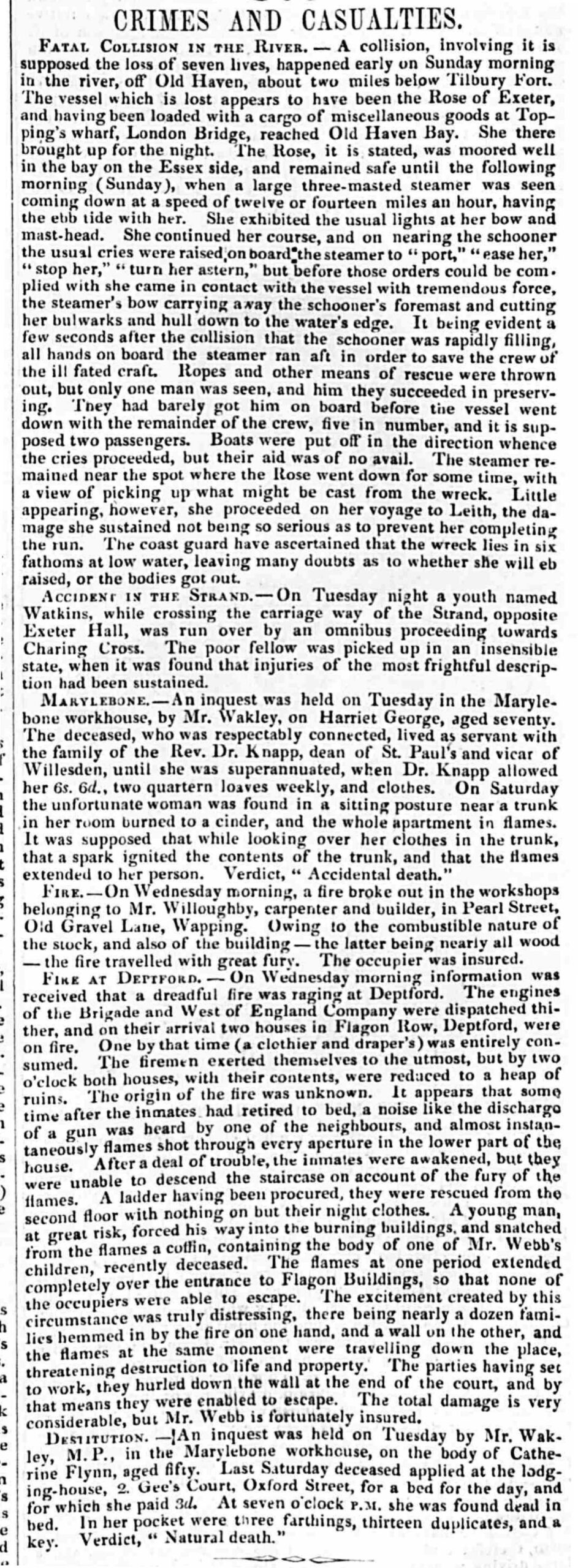
Runcorn Weekly News – Wednesday 24 December 1913
KNOCKED DOWN IN THE DARK AT DITTON.
TWO MEN INJURED IN MOTOR VAN ACCIDENT.
STRANGE AFFAIR IN STEWARD’S LANE.
The somewhat serious injuries sustained by two men by being knocked down by a motor van in Steward’s Lane, close to the Ball of Ditton, on Monday night, have engaged the careful attention of the Widnes police.
It appears that shortly before six o’clock on Monday evening, a labourer named Jarman, Broughton Cottages, Ditton, was proceeding along Steward’s Lane in the direction of Widnes in company with a pedlar, named Robert Newman, of Everton Crescent, Liverpool, when they were knocked down from behind by a motor van also travelling towards Widnes. The accident happened on the Widnes side of the village and at a dark spot immediately beyond the range of the lights reflected from the shop or house windows.
The information obtained by the police points to the supposition that the men were drunk. Independent witnesses state that the van was travelling at a reasonable speed and when stopped after the accident it was on the proper side of the road.
The two men were speedily conveyed to the Accident Hospital, where Newman was found to be suffering from a fractured thigh and injuries to the head. Jarman had several scalp wounds, but no bones were broken.
The van belonged to Messrs. Bennett, confectioners, of Lovely Lane, Warrington, and was driven by Herbert Bennett, a son of the principal of the firm.
Yesterday (Tuesday) Newman’s condition was such that he was able to be moved to the Whiston Workhouse Infirmary, and Jarman, who remains an inmate of the Widnes Accident Hospital, is reported to be in a very critical condition.
Contextualising the Article: Use of Vehicles in 1913 and Its Value for Researchers
The article from the Runcorn Weekly News dated 24th December 1913, highlights an incident involving a motor van accident in Ditton, showcasing the growing presence of motorised vehicles in early 20th-century Britain. This specific period—just before the outbreak of the First World War—marks a transformative era in transportation history. Understanding this context enriches the significance of the story, offering insights into the societal, technological, and historical developments of the time.
Use of Vehicles in 1913
- Emerging Role of Automobiles: By 1913, motor vehicles were becoming increasingly common, though still considered modern innovations. The motor van described in the article represents early commercial applications of motorised transport, likely used by businesses such as Messrs. Bennett, the confectioners mentioned in the piece.
- Road Conditions and Infrastructure: At the time, roads were often poorly lit and not designed for motorised traffic, as reflected in the description of the “dark spot immediately beyond the range of the lights.” This incident underscores the challenges faced by drivers and pedestrians in adapting to this new technology.
- Pre-War Industrial Growth: The pre-World War I years were marked by rapid industrialisation and the rise of motor vehicle manufacturing. Brands like Ford and Morris were beginning to produce cars in significant numbers, with vehicles gradually replacing horse-drawn carts for both personal and commercial use.
- Safety and Regulation: Accidents such as the one described were not uncommon, as the integration of motor vehicles outpaced the development of road safety measures. The article’s focus on the driver’s adherence to the “proper side of the road” reflects the early attempts to enforce traffic rules.
Significance of the Article for Researchers
- Social and Economic History:
- The use of a motor van for business purposes reflects the early adoption of motor vehicles in trade and commerce, marking a shift from traditional horse-drawn transport to mechanised systems.
- The mention of “Messrs. Bennett, confectioners” provides insights into local businesses and their logistics, valuable for studying regional economic development.
- Cultural and Technological Transition:
- The accident narrative illustrates the societal adjustment to new technologies, with phrases like “information obtained by the police points to the supposition that the men were drunk” revealing attitudes and biases of the time.
- Independent witness statements on the van’s speed and positioning also highlight early public perceptions of motor vehicle safety and accountability.
- Pre-War Local History:
- For local historians, the article sheds light on community life in Ditton and Widnes, detailing everyday occurrences and their impact on the local populace.
- The reference to the Whiston Workhouse Infirmary and Widnes Accident Hospital offers a glimpse into the medical facilities and social welfare systems of the period.
- Transport Evolution:
- This article contributes to the broader study of transport history by documenting the practical use of motorised vehicles in rural and semi-urban areas.
- Researchers examining the evolution of logistics, road safety, or early vehicle manufacturing might find this anecdote illustrative of larger trends.
Potential Uses for Researchers
- Genealogy: Family historians tracing relatives in Ditton, Widnes, or Liverpool might find useful leads in names like Jarman and Newman.
- Business Histories: The reference to Messrs. Bennett can support studies on local businesses and their adaptation to modern transport.
- Legal and Safety Studies: The article’s discussion of driver behaviour and police investigation reflects early legal approaches to road safety.
- Cultural Studies: The attitudes towards intoxication and the role of independent witnesses capture societal norms and prejudices of the time.
This seemingly mundane accident report is thus a valuable resource for researchers, providing a snapshot of life in 1913 while contributing to our understanding of the interplay between technology, society, and history on the eve of a world-changing conflict.
#History #1913 #TransportHistory #PreWW1 #MotorVehicles #LocalHistory #Ditton #RoadSafety #Early20thCentury
Free to use British Newspaper Research Service
British newspapers offer a treasure trove of information for family historians. They capture moments in time, providing context, character, and community insight that official records cannot. With the free service provided by Old British News, this research becomes even more accessible, enabling historians to delve into rich, untold stories of their relatives. By combining these resources with other records, family historians can create a more complete and engaging picture of the past.
I search historical articles to locate mentions of your ancestors—whether they were involved in notable events or simply part of the everyday life reported in these newspapers. If relevant articles are found, I deliver them to you in a PDF format at no cost.
If I find articles, they’ll be sent to you in a clear, organised PDF. If not, you’ll be informed right away. See here.




